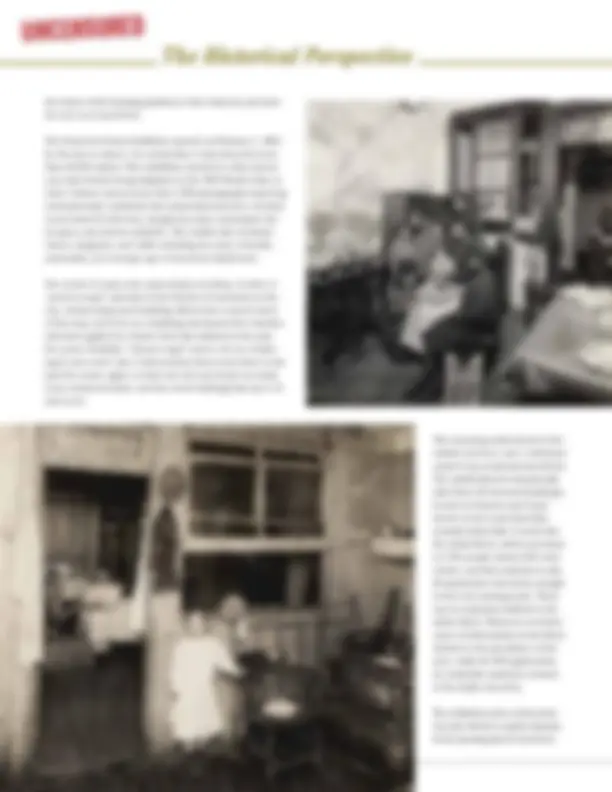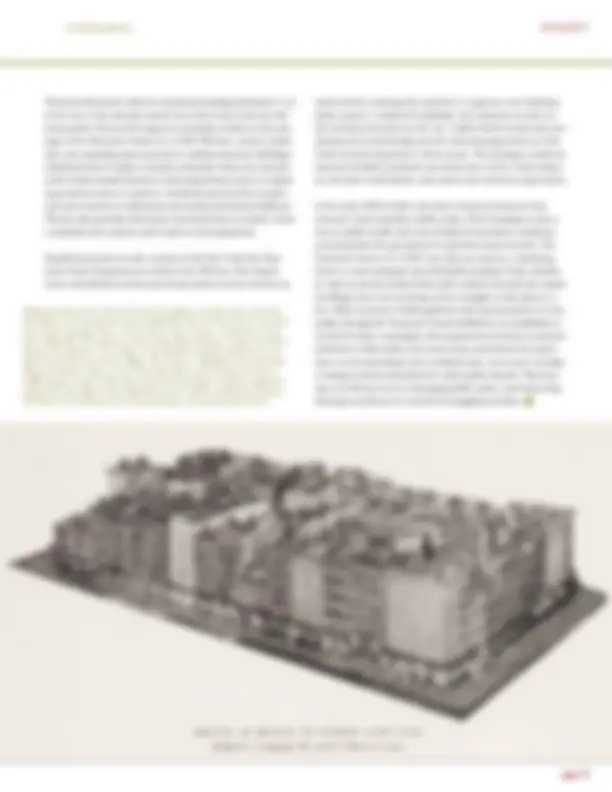




Study with the several resources on Docsity

Earn points by helping other students or get them with a premium plan


Prepare for your exams
Study with the several resources on Docsity

Earn points to download
Earn points by helping other students or get them with a premium plan
Community
Ask the community for help and clear up your study doubts
Discover the best universities in your country according to Docsity users
Free resources
Download our free guides on studying techniques, anxiety management strategies, and thesis advice from Docsity tutors
An historical account of the living conditions in new york city during the late 1800s and early 1900s, specifically focusing on the overcrowded and unsanitary tenements in the lower east side. The efforts of social worker lawrence veiller and the charity organization society to raise awareness of these issues through a public exhibition, which attracted thousands of visitors and ultimately led to the passing of the tenement house act of 1901. Statistics and data on the number of families living in each building, the lack of adequate sanitation facilities, and the high rates of poverty and disease in these areas.
Typology: Slides
1 / 4

This page cannot be seen from the preview
Don't miss anything!



Uncensored
This photo, one of a series taken by Lewis Hine in 1908, documents conditions in one of the most crowded residential districts in the world. Here, children play in trash-strewn Orchard Street. Photo courtesy of the New York Public Library.
Spring 2012
In 1900 New York was both the richest and second-most populous city on Earth. But beneath its veneer of prosperity, many of its 3.4 million residents were struggling to get by, often forced to live in crowded and unsanitary tenements. Tenements were typically 25 feet wide by 100 feet deep and six stories tall, built to accommodate 26 families in 325-square-foot apartments. Then, as now, high rates of poverty in New York City accom- panied high demand for housing, and families often had to double up or take in boarders to pay the rent, creating dangerously overcrowded conditions. By 1890 the Tenth Ward of Manhattan’s Lower East Side was home to more people per acre than anywhere else on the planet. In the densest tenement districts, developers built housing on almost every lot, leaving no room for parks or other open spaces. Rear tenements were often built in the yards behind street-facing tenement houses, allowing just enough space in between for shared toilets. Moreover, street-facing tenement houses were built right against one another, leaving only small air vents that often became receptacles for trash. Poor air qual- ity, lack of sufficient space and light, lack of plumbing and fresh water, and other defects bred sickness, particularly tuberculosis. While cramped housing conditions existed in cit- ies across the country, poor New Yorkers paid more for their atrocious accommodations than their counterparts in other cities.
Generations of reformers had attempted to improve living conditions for poor and work- ing-class residents of New York, with little success. The housing regulations passed during the 1800s — along with lax enforcement of the laws — had done little to curb the incentive of developers to build as much housing as they could in as little space as possible. By the 1890s, reformers had realized that the tenement problem could be solved only with government help.
In 1898 a young social worker named Lawrence Veiller persuaded the Charity Organiza- tion Society, New York’s leading philanthropy, to form a Tenement House Committee to conduct research and propose improvements to New York City housing. The committee carefully documented the horrific conditions of much of the housing in New York, as well as the concentration of poverty and disease that plagued tenement districts. Veiller argued that the conditions of life among the lower classes created “sick, helpless people … and a host of paupers and charity seekers.” He believed that unsafe, unsanitary, and crowded living conditions exacerbated poverty. If housing were improved, the poor would be healthier and better able to contribute to the community.
For Veiller and other reformers, the need for stricter housing regulations and better enforce- ment was obvious; the difficulty lay in implementing new policy in the face of opposition from the city’s powerful building interests. Veiller came up with a brilliant public-relations move: He would display the data the committee had collected in a public exhibition for all to see. Such a barrage of carefully curated information would overwhelmingly demonstrate
page 25
Spring 2012
Theodore Roosevelt called for minimum housing standards to “cut at the root of the diseases which eat at the body social and the body politic.” Roosevelt’s support eventually resulted in the pas- sage of the Tenement House Act of 1901. This law created a build- ing code requiring improvements in existing tenement buildings: Landlords had to replace old-style outhouses with more modern water closets, install windows connecting interior rooms to adjoin- ing exterior rooms to improve ventilation, provide fire escapes, and add windows to illuminate previously pitch-black hallways. The law also specified that future tenements had to include center courtyards and a private water closet in each apartment.
Equally important was the creation of the New York City Tene- ment House Department to enforce the 1901 law. This depart- ment consolidated powers previously spread across various city
departments claiming the authority to approve new building plans, inspect completed buildings, and maintain records on all existing tenements in the city. Veiller believed that this new department would finally provide what housing reform in New York City had long lacked: enforcement. The housing conditions that had horrified residents and observers of New York’s slums for decades would finally come under more effective supervision.
In the early 1900s Veiller and other reformers believed that research could transform public policy. From housing to educa- tion to public health, they successfully documented conditions and persuaded the government to generate improvements. The Tenement House Act of 1901 was only one step in a continuing effort to create adequate and affordable housing. Today, families in cities across the United States still confront decrepit and unsafe dwellings and overcrowding as they struggle to find places to live. When Lawrence Veiller gathered data and presented it to the public through the Tenement House Exhibition, he established a model for future campaigns. From grassroots activists to research institutes to think tanks, advocates today understand the impor- tance of documenting social conditions and, even more crucially, of using social documentation to raise public interest. This strat- egy can still succeed in changing public policy and improving
Exhibiting Poverty
Photos courtesy of the Community Service Society and Columbia University Rare Book and Manuscript Library. above left: Poor families lived in crowded and unsafe housing. Here, a family sits in their narrow, windowless living room. Below left: This photo by Jessie Tarbox Beals depicts a typical tenement kitchen and bedroom. The window in the bedroom probably provided air and light for the entire apartment. Below: This model, a highlight of the Tenement House Exhibition, shows a Lower East Side block that was home to nearly 2,800 people living in 39 six-story tenement buildings. Exhibition organizers argued that basic government regulations could improve conditions on blocks like these and ameliorate the rampant disease and poverty found there.
page 27